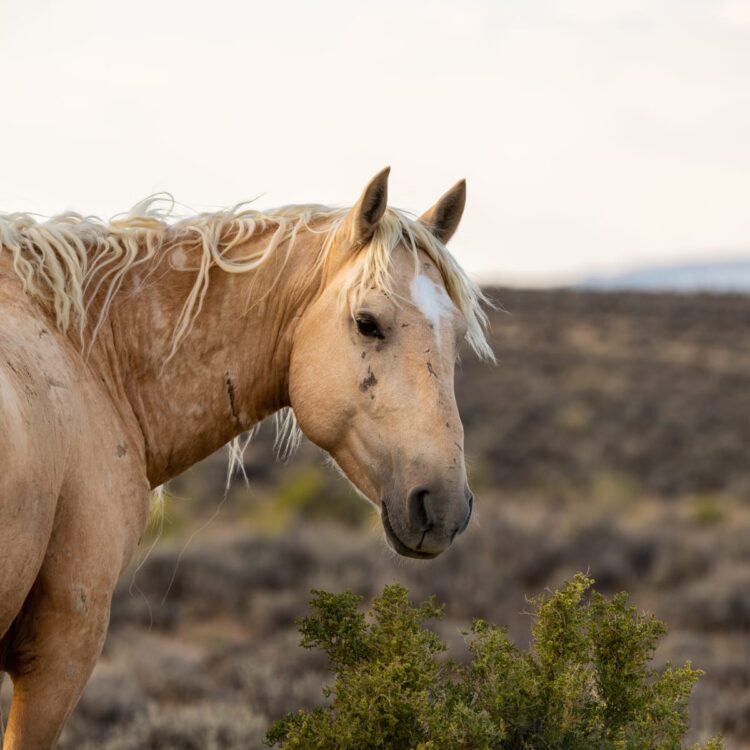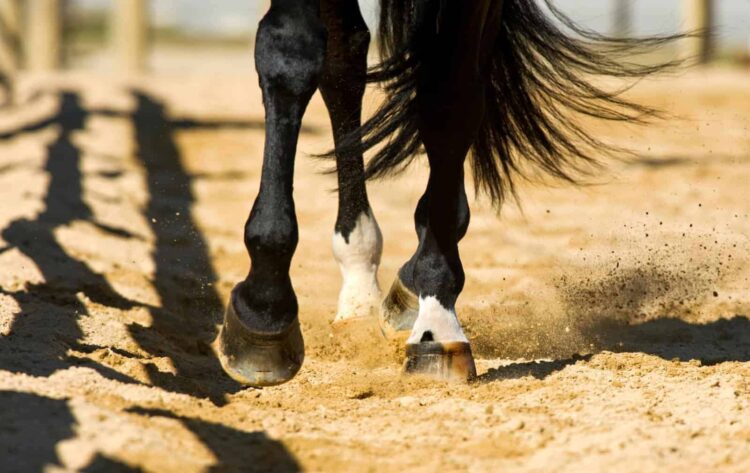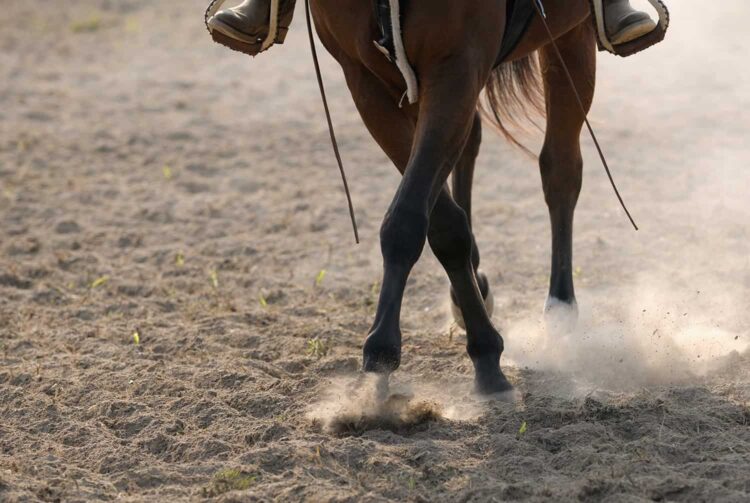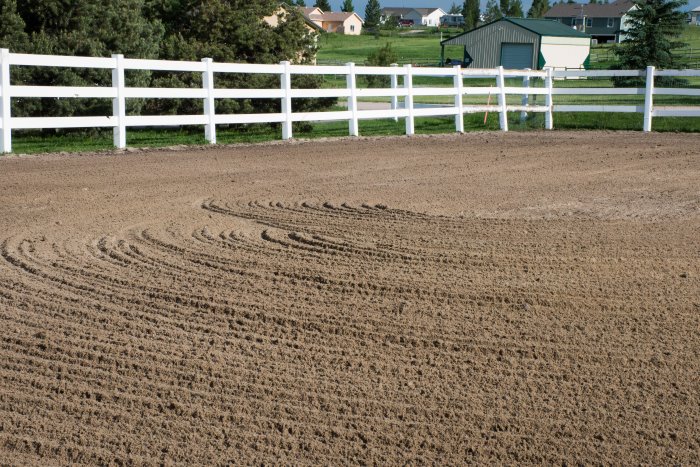Humans first domesticated horses over 5,500 years ago in Kazakhstan. Horses have been reliable creatures throughout the course of time. We’ve relied on them for transportation as we’ve hunted food, fought wars, and built civilizations. They never left our side.
Despite the creation of cars and planes, people all over the globe continue to turn to horses for everyday needs. We’ve even trained horses to race and compete in arenas. Because they are such magnificent creatures, it’s important to care for their health and wellbeing. One way we care for horses is by using proper footing within a horse arena. We’ll teach you how to mix the best footing in the below guide.
Why Is Footing So Important?

Good horse footing promotes musculoskeletal health in horses. Think of it as an athlete picking out the most appropriate and supportive shoes for their sport. Without good support, their chances of wear and tear (or sudden injury) increase.
As riders train their horses, they often switch between varying types of footing. Mixing up the footing during training strengthens the horse’s joints and ligaments. Some horses will even start to show a preference for one type of footing over the others. Professional riders encourage others to take the time to understand their horse’s favorite footing.
What’s Considered ‘Good’ Footing?
Someone saying they mix the best footing for horse arena grounds is like someone saying they make the best chili. Despite it being a basic recipe, there are quite a bit of mixed opinions and variations. Click here to learn more about this topic.
On a surface level, most consider ‘good’ footing to be footing that’s supportive to a horse’s body. Good footing reduces the chance of injury while preserving the overall health of the horse. The materials used in footing are dependent on the environment. The type of competition and/or training activities also influence how footing mixtures are made.

Harder materials, such as compacted sand and pavement, help heal tendons through trotting but cause issues over time for horses training in endurance. Softer materials, such as fiber and soft sand mixes, are great for competitions but can cause issues to the soft tissue if the footing isn’t hard enough. As you can see, there’s a fine line one must follow when mixing horse footing. You’ll need a footing that’s cushioned enough to absorb hard impacts but stable enough to support heavy weights and quick movement.
Start With the Base
Before laying down any horse footing, guarantee you’re starting with a good base. The base sets the stage for the remainder of your project.
The base must drain efficiently to control the water and moisture content of your footing. No arena owner wants to watch a lake form each time there’s rain in the area, but you also don’t want to suffer from too dry of sand. Install drains and base mats that aid in controlling moisture content. Some arena owners install irrigation systems under their footing, especially those in areas where droughts are common.
Start With Sand

Start with sand footing when creating a footing mix. Don’t get discouraged if you’re new to the game. It’ll take time and experimentation to find the sweet spot in your mixture.Avoid sand that’s too round and polished. Squishy beach-like sand can cause injury to a horse’s soft tissue and joints. You’ll want to find sand particles that are angular to improve traction.
If a supplier attempts to sell you sand one might find in a river, be cautious. It’s important to only use high-quality sand with additives you can trust. Cheap sand tends to quickly break down.Don’t cut corners in your budget when it comes to footing. When you invest in the footing, you invest in your horses and the arena.
Sand Additives
Now that you’ve gotten your base footing material, it’s time to incorporate sand additives. Use additives that provide cushioning, support, and traction. Avoid stiff felt or fibers that feel too loose.
As you create footing mixes, consider the activities being performed in the arena. If your arena is home to many jumping competitions, think about impact absorption. Think more about traction and stability if your arena is used more often for endurance and speed races. Before buying additives, read through the list of ingredients. Lean towards ingredients that are environmentally friendly and those that reduce dust.
Maintaining Your Arena

It’s crucial you guarantee your footing is maintained and consistent. Poor footing increases the chance of injury. Avoid using overhead sprinklers because they contribute to uneven watering, which leads to harrowing. Many arena owners use systems that water the sand from below the footing.
You must also invest in a leveler for the arena. A leveler evens out the sand to avoid random bumps and dips in the footing. An unsuspected dip in the sand can cause major injuries!If an injury has occurred recently in your arena, it’s important to inspect your base and footing before allowing any more riding.
Creating and Maintaining Footing for Your Horse Arena
Do you own and/or manage a horse arena? If so, you understand the importance of creating and maintaining good footing for your four-legged guests.
Before you focus on good footing, create a high-quality base with base mats and drainage pipes. Install your sand footing, and mix in additives that increase impact absorption and support. The job isn’t finished here because you must continue to maintain the arena ground to ensure the health and safety of the horses.
The post How to Mix the Best Footing for Horse Arenas appeared first on FotoLog.
from FotoLog https://ift.tt/3kdA1oI
via IFTTT


0 Comments